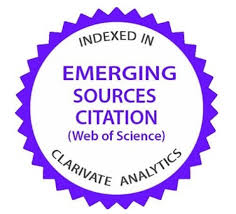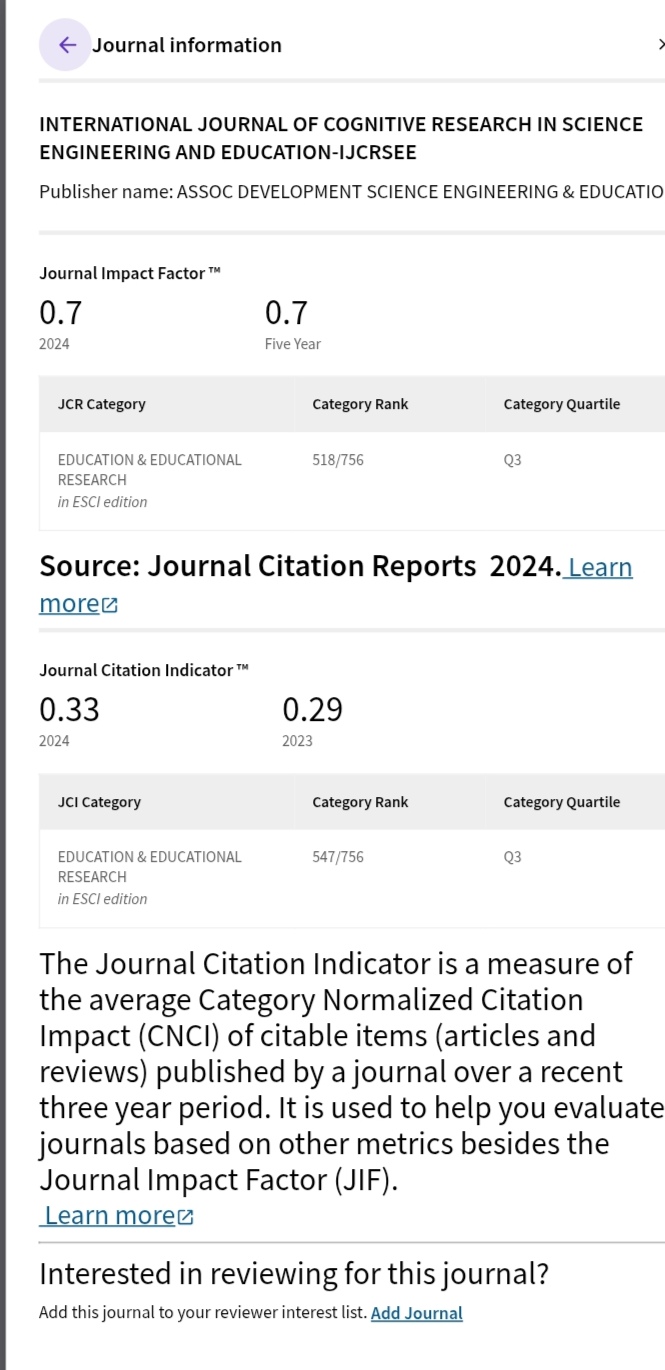Academic Writing: Origins and Impact of Eloquence
DOI:
https://doi.org/10.23947/2334-8496-2025-13-1-223-231Keywords:
expressiveness, emotions, genre of scientific prose, scientific article, linguistic means, scientism, language functionsAbstract
The article deals with the unsettled question whether academic scientific writing can be eloquent and possess some expressive characteristics and what impact it has on the reader. Historically the evolution of classical science to post-non-classical one was marked with substantial changes in the stylistics of scientific genres. Post-non-classical science is characterized by profoundly new conceptual notions, interpenetration of different forms of discourse, and the use of expressive linguistic means and emotional components in research papers. The current paper shows that notwithstanding the apparent antinomy, the formal and expressive functions of academic writing can effectively “coexist” in modern science. The objective of the present paper is to identify socio-historical grounds for tolerance to emotional representation of academic knowledge, to describe the changes in post-non-classical science, which made emotiveness possible in academic writing, to reveal the ways of communicating emotiveness in academic discourse. The main methods of this research include textual and stylistic analysis of academic articles and their titles, selected from scientific journals indexed in authoritative databases and materials of British National Corpus. It was revealed that the scope of expressive vocabulary in academic writing depends on the genre of scientific prose. The linguistic expressive means used by the representatives of both humanities and natural sciences and technology include: metaphor, metonymy, epithets, intensifying adverbs, quantifiers, the use of precedent texts, assertion of the author’s style and gender identity.
Downloads
References
Abrosimova, L.S., & Bogdanova, M.A. (2011). Man Bodily and Verbal]. Rostov-on-Don: IPO SFEDU. https://www.elibrary.ru/item.asp?id=20834064
Banks, D. (2018). Thoughts on Publishing the Research Article over the Centuries. Publications, 6, 10. https://doi.org/10.3390/publications6010010 DOI: https://doi.org/10.3390/publications6010010
Barbalet, J. (2004). Consciousness, emotions, and science. Advances in Group Processes, 21, 245–272. https://doi.org/10.1016/S0882-6145(04)21010-4 DOI: https://doi.org/10.1016/S0882-6145(04)21010-4
Beaty, C. B. (1989). Great big boulders I have known. Geology, 1989, 17 (4), 349–352. https://pubs.geoscienceworld.org/gsa/geology/article-abstract/17/4/349/187767/Great-big-boulders-I-have-known?redirectedFrom=PDF DOI: https://doi.org/10.1130/0091-7613(1989)017<0349:GBBIHK>2.3.CO;2
Belousova, A.K., & Epritskaya, N. K. (2018). Improving the Teaching of Foreign Languages through Comparative Analysis of Images in Proverbs and Sayings. Integration of education, 22 (4). 750-765. https://doi.org/10.15507/1991-9468.093.022.201804.750-765 DOI: https://doi.org/10.15507/1991-9468.093.022.201804.750-765
BNC - British National Corpus. https://www.english-corpora.org/bnc/
Bocharnikova, E.A. (2011). Stylistic Borrowings as Kind of Interdiscursive Relations. Bulletin of Volgograd State University, 2 (14), 79–83.
Casasanto, D. (2008). Who’s Afraid of the Big Bad Whorf? Crosslinguistic Differences in Temporal Language and Thought (December 1, 2008). Language Learning, 58 (1), 63–79. https://ssrn.com/abstract=1402163 DOI: https://doi.org/10.1111/j.1467-9922.2008.00462.x
Clercq de, N.C.; Frissen, M.N.; Levin, E.; Davids, M.; Hartman, J.; Prodan, A.; Herrema, H.; Groen, A.K.; Romijn, J.A.; Nieuwdorp, M. (2019). The effect of having Christmas dinner with in-laws on gut microbiota composition. Human Microbiome Journal, 13. https://doi.org/10.1016/j.humic.2019.100058 DOI: https://doi.org/10.1016/j.humic.2019.100058
Diller, H.J. (1992). Emotions and the Linguistics of English; Niemeier: Tuebingen.
Ellerton, P., & Brown, D. (2018). Sorry Mr Spock: science and emotion are not only compatible, they’re inseparable. The Conversation, 22 April 2018. https://theconversation.com/sorry-mr-spock-science-and-emotion-are-not-only-compatible-theyre-inseparable-94034
Gallois, C. (1993). The Language and Communication of Emotion: Interpersonal, Intergroup, or Universal? American Behavioral Scientist, 36, 309–338. https://doi.org/10.1177/0002764293036003005 DOI: https://doi.org/10.1177/0002764293036003005
Gross, M. (2013). Can science relate to our emotions? Current Biology, 23, 12, 501–504. https://doi.org/10.1016/j.cub.2013.05.056. DOI: https://doi.org/10.1016/j.cub.2013.05.056
Guinda, C. (2022). Scientific Stylisation or the ‘Democracy Dilemma’ of Graphical Abstracts. Publications, 10(1), 11. https://doi.org/10.3390/publications10010011 DOI: https://doi.org/10.3390/publications10010011
Gómez-Cabranes, L. (2013). Las Emociones del Internauta. In Emociones y Estilos de Vida: Radiografía de Nuestro Tiempo; Flamarique, L., D’Oliveira Martins, M., Eds.; Biblioteca Nueva: Madrid, Spain, 211–243. https://doi.org/10.15581/004.25.1889 DOI: https://doi.org/10.15581/004.25.1889
Goodman, N.W. (2005). From Shakespeare to Star Trek and beyond: a Medline search for literary and other allusions in biomedical titles. The BMJ, 331, 1540–1542. https://www.bmj.com/content/331/7531/1540.long DOI: https://doi.org/10.1136/bmj.331.7531.1540
Jacobsen, E. (1979). Language and Emotion. In Pragmalinguistics: Theory and Practice; Moution: The Hague; pp. 215–231. https://doi.org/10.1515/9783110815689-010 DOI: https://doi.org/10.1515/9783110815689-010
Johnson-Laird, P.N., & Oatley, K. (1989). The language of emotions: An analysis of a semantic field. Cognition and Emotion, 3(2), 81–123 DOI: https://doi.org/10.1080/02699938908408075
Harvey, W. An anatomical disquisition on the motion of the heart and blood in animals; Rhys E. (Ed.); (2022) United Kingdom: J. M. Dent & Co. https://doi.org/10.1111/j.1542-474X.2000.tb00387.x DOI: https://doi.org/10.1111/j.1542-474X.2000.tb00387.x
Heard, S.; Cull, Ch.; White, E. (2022). If this title is funny, will you cite me? Citation impacts of humour and other features of article titles in ecology and evolution. FACETS, 8, 1–15. https://doi.org/10.1139/facets-2022-0079 DOI: https://doi.org/10.1139/facets-2022-0079
Kelly, A.R., & Miller, C.R. (2016). Intersections: Scientific and Parascientific Communication on the Internet. In Science and the Internet: Communicating Knowledge in a Digital Age; Gross, A., Buehl, J., Eds.; Baywood: Amityville, NY, USA; 221–245.
Lakoff, G., & Johnson, M. (2004). Metaphors We Live by. Moscow, Editorial URSS. https://urss.ru/cgi-bin/db.pl?lang=Ru&blang=ru&page=Book&id=293902&srsltid=AfmBOorQoYYSMQDmggZzfJ0swgxp7s7ROvs6jfIhvyGIJUk-65fPDKy7
Lanouette, W. (1994). Genius in the shadows: a biography of Leo Szilard: the man behind the bomb. University of Chicago Press. https://www.amazon.com/Genius-Shadows-Biography-Szilard-Behind/dp/0226468887 DOI: https://doi.org/10.1063/1.2809040
Maslova, V. A. (2021). Speech Genre Theory through the Prism of Modern Linguistics. Speech Genres, 1(29), 6–11. https://doi.org/10.18500/2311-0740-2021-1-29-6-11 DOI: https://doi.org/10.18500/2311-0740-2021-1-29-6-11
Mur-Dueñas, P., & Lorés, R. (2022). When Science Communication Becomes Parascience: Blurred Boundaries, Diffuse Roles. Publications, 10, 14. https://doi.org/10.3390/publications10020014 DOI: https://doi.org/10.3390/publications10020014
Nikolaeva, A.V. (2023). Syntactical expressive means in a scientific text. Humanities and social sciences, 96 (1), 113–118. https://doi.org/10.18522/2070-1403-2023-96-1-113-118 DOI: https://doi.org/10.18522/2070-1403-2023-96-1-113-118
Ortony, A., Clore, G.L., & Collins A. (1988). The cognitive structure of emotions. Cambridge University Press. https://doi.org/10.1017/CBO9780511571299 DOI: https://doi.org/10.1017/CBO9780511571299
Plutschack, M.B., Pieber, B., Gilmore, K., & Seeberger, P.H. (2017). The Hitchhiker’s Guide to Flow Chemistry. Chemical Reviews, 117(18), 11796-11893. https://doi.org/10.1021/acs.chemrev.7b00183 DOI: https://doi.org/10.1021/acs.chemrev.7b00183
Polanyi, M. (1974). Personal knowledge: Towards a post-critical philosophy. Chicago, The University of Chicago Press. https://archive.org/details/personalknowledg0000pola
Seoane, E. (2006). Changing styles: On the recent evolution of scientific British and American English. In Syntax and Grammatical Norms: English from 1500–2000; Dalton-Puffer, C., Kastovsky, D., Ritt, N., Schendl, H., Eds.; Lang, P. Ed.; Bern, Switzerland, 191–211. https://rusneb.ru/catalog/000200_000018_RU_NLR_b_ik_163081/
Shahovskij, V.I. (2008). Linguistic Theory of Emotions: Monography. Moscow: Gnozis. https://search.rsl.ru/ru/record/01004109334
Skripak, I.A. (2008). Language Expression of Expressiveness as a Way of Speech Influence in Modern Scientific Discourse. Thesis, The North Caucasus Federal University. https://cheloveknauka.com/yazykovoe-vyrazhenie-ekspressivnosti-kak-sposoba-rechevogo-vozdeystviya-v-sovremennom-nauchnom-diskurse
Space - The Final Frontier for Economists and Elephants. Science, 2004, 306, 5695, 420–421. https://www.science.org/doi/10.1126/science.1105392 DOI: https://doi.org/10.1126/science.1105392
Sternin, I. A. (2017). How to respect yourself? Scientist Philologist speculates about the urgent. Poisk, 24 February 2017, 8. http://sterninia.ru/index.php/publitsistika/item/311-nashi-uchenye-dolzhny-sebya-uvazhat/
Studien zum Fest: Stört das Essen bei den Schwiegereltern die Darmflora? Der Spiegel, December 2019. https://www.spiegel.de/wissenschaft/mensch/weihnachten-stoert-das-essen-bei-den-schwiegereltern-die-darmflora-a-1302158.html
The Language of Emotions: Conceptualization, expression, and theoretical foundation. (1997). Niemeier, S., Dirven R., Eds.; Amsterdam / Philadelphia, John Benjamins Publishing House. https://doi.org/10.1075/z.85 DOI: https://doi.org/10.1075/z.85
Thaiss, Ch., & Zawacki, T.M. (2022). Engaged Writers and Dynamic Disciplines: Research on the Academic Writing Life; The WAC Clearinghouse. https://wac.colostate.edu/books/landmarks/engaged/
Wang, L, Sofer Z., & Pumera M. (2020). Will Any Crap We Put into Graphene Increase Its Electrocatalytic Effect? ACS Nano, 14(1), 21-25. https://doi.org/10.1021/acsnano.9b00184 DOI: https://doi.org/10.1021/acsnano.9b00184
Weihnachten mit den Schwiegereltern kann zu mehr Stress-Bakterien im Darm führen). Focus Online, 23 December 2019. https://www.focus.de/familie/eltern/familie-heute/mini-studie-aus-den-niederlanden-weihnachten-mit-den-schwiegereltern-kann-zu-mehr-stress-bakterien-im-darm-fuehren_id_11490699.html
Wierzbizcka, A. (1999). Emotions Across Languages and Cultures: Diversity and Universals (Studies in Emotion and Social Interaction), 1st ed., Cambridge University Press. https://www.researchgate.net/publication/243784797_Emotions_Across_Languages_and_Cultures
Published
How to Cite
Issue
Section
Categories
License
Copyright (c) 2025 Alla Belousova, Larisa Abrosimova, Marina Bogdanova

This work is licensed under a Creative Commons Attribution 4.0 International License.
Plaudit
Accepted 2025-03-25
Published 2025-04-29











